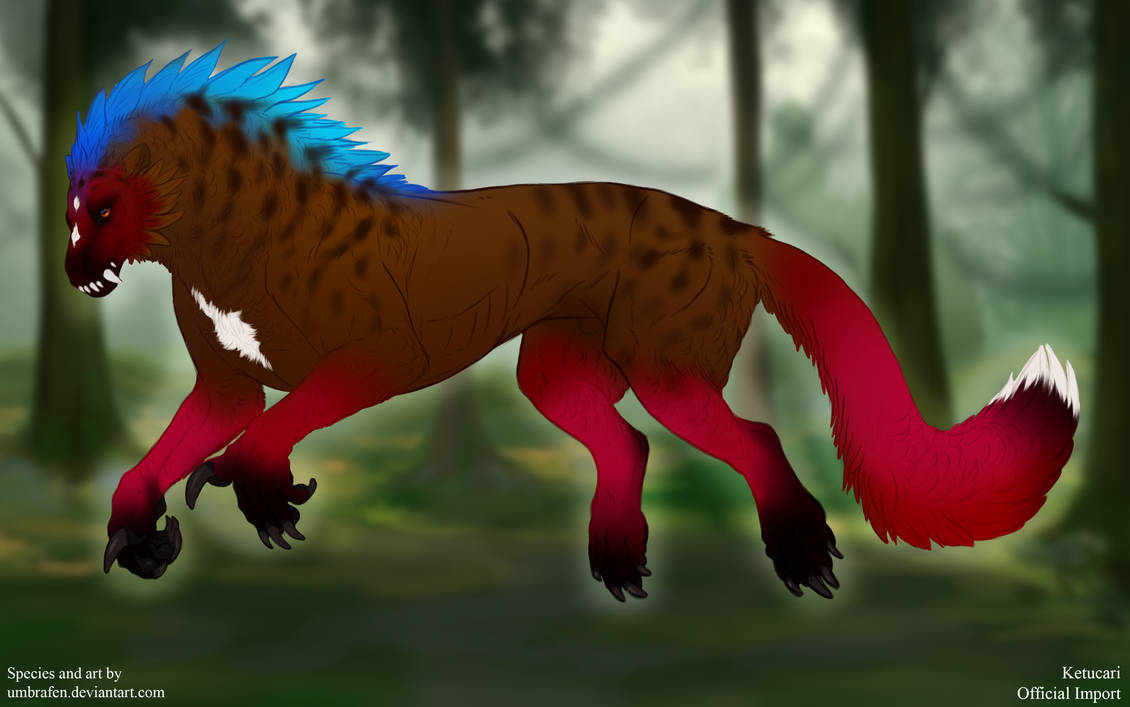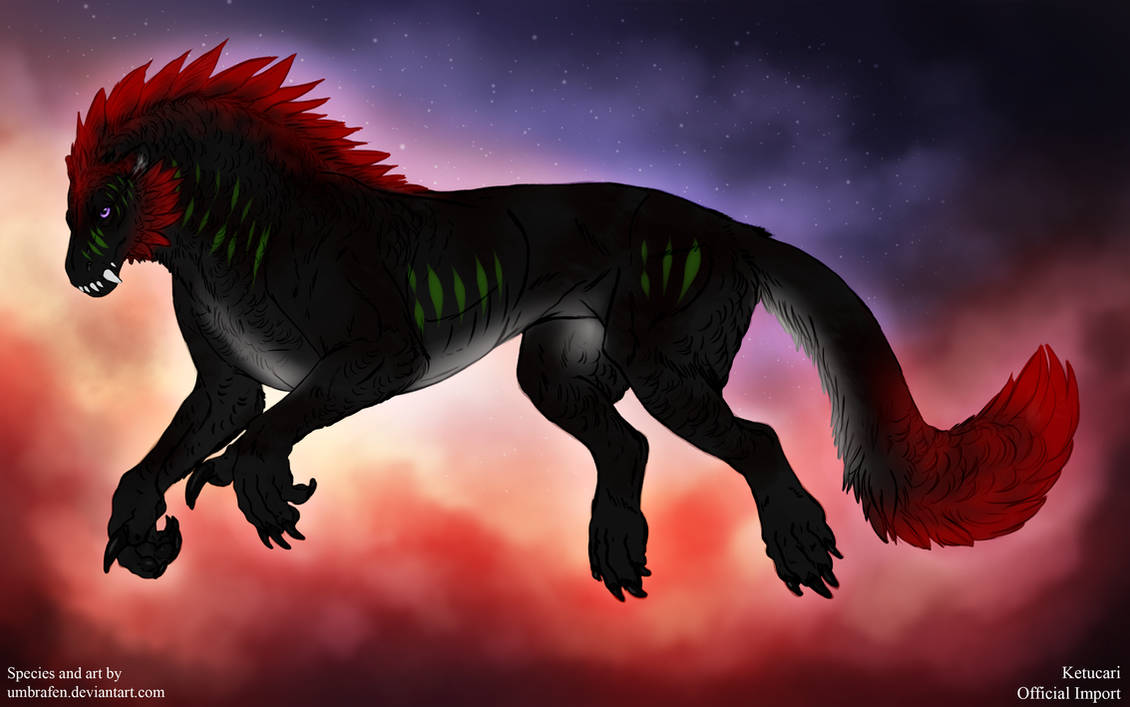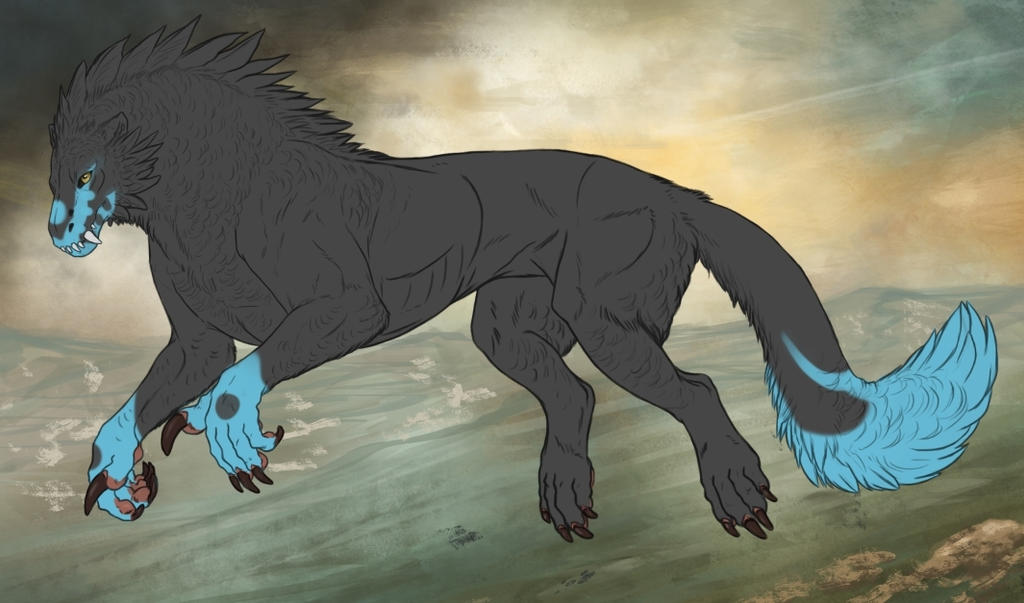Hued Points
Examples
Basics
Color
Hued points can be any color as long as they do not mimic Washout/Pangare, Tarpit/Dusky Points/Void, or Mud/Dusted.
The color of hued points is subject to admin discretion in order to make sure they do not overlap with other markings. Be sure to pick an appropriate color such that the hued points are instantly recognizable as such.
Range
Hued points must always be visible (unless a white marking covers it) and cover at least 10% of the maximum range. In general, Eraku is a good example of minimal hued points. Remember, this ketucari also possesses the frill and vent genes - while they match the hued points, they do not count towards the overall coverage of hued points:
Below is the maximum range for hued points.
 You may notice that some ketucari in the examples above have brightly colored crests. This is not caused by hued points, but by the frill gene!
You may notice that some ketucari in the examples above have brightly colored crests. This is not caused by hued points, but by the frill gene!
Interaction with Other Markings
All markings can be layered under or over hued points.![]() Hued points may be affected by Empty, allowing it to appear as an outline or with a cutout.
Hued points may be affected by Empty, allowing it to appear as an outline or with a cutout.
Accents
Here are some small accents you can add to your designs to make them more unique!
• Hued points may have a subtle gradients, like below. Notice the last two have been paired with dusky points to create a more dramatic gradient.



• Small cut-outs may be present in the marking, like below.


• You may use up to 2 colors in hued points.
• While hued points generally calls for "natural" edges, stylization is allowed to some extent. Excessive stylization (such as making your ketucari look like it has tribal tattoos) will cause the design to be rejected. Here is an example of acceptable hued points stylization:











